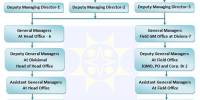Insurance
Insurance is nothing but a system of spreading the risk of one onto the shoulders of money.
Life Insurance
According to J. H. Magce
“Life insurance contract embodies an agreement in which the insurer undertakes to pay a stipulated sum upon death of insured or at some designated time”.
“Life insurance provides financial security to human lives. Life insurance is a legal contract between the insured and the insurer. The insurer agrees to pay a definite sum of money to the insured on maturity of contract.
Insurable Interest
The insured should have insurable interest in the subject matter of insurance. Insurable interest means interest of ownership or financial interest.
Fire Insurance
Fire insurance contract may be defined as an undertakes to indemnity the other party against financial loss which the better may sustain by reason of cerfident subject matter being damaged as destroyed by fire or other defined perils up to an agreed amount.
Marine insurance
“Marine insurance has been defined as a contract between insurer and insured where by the insurer undertakes to indemnify the insured in a manner and to the interest there by agreed, against to marine losses incident to marine adventure” M.N Mishra
RISK
Risk is the possibility of an unfavorable deviation from expectations; that is, the occurrence of an undesirable contingency.
According to M.N. Mishra, “Risk is the uncertainly of loss.”
Principles of Insurance
Insurance contracts arc based on the following principles:
1. Utmost Good Faith:
Insurance contract is based on utmost good faith. Both insured and insure should provide true information in full. The insured should disclose all lads about the subject matter of insurance. This is used to ascertain risk arid the rate of premium.
2. Insurable Interest:
The insured should have insurable interest in the subject matter of insurance. Insurable interest means interest of ownership or financial interest.
3. Indemnity:
Insurance is a contract of indemnity. It compensates for actual loss up to the amount of contract. No profit should be made from the insurance contract.
4. Subrogation:
The rights of the subject matter of insurance get transferred from insured lo insurer after indemnity. The insurer gets ownership of the damaged property.
5. Proximity Cause:
The nearest cause of loss should be considered for compensation. Insurer should pay for the damage caused by the insured risk only.
6. Contribution:
Contribution is sharing of actual loss among con insurers. The insured can insure the same property with more than one insurance company.
7. Mitigation of Loss:
Mitigation is to make the loss less severe, it is the duty of insured total necessary steps to minimize the loss of subject matter of insurance.
8. Economic growth of the country
Welfare of employees creates a conducive atmosphere to work;
-Adequate capital form insurance accelerates the production cycle.
-In case of business the property and human material are protected against certain losses, capital and credit are expanded.
According to Prof. James Athearn;
Risk may be defined-
(a) The possibility of loss or
(b) The possibility of unfavorable deviation from expectations because any deviation from expectations is a loss.
Reinsurance
Reinsurance is the process by which an insurance company protects itself against the risk of losses with other insurance companies.
Reinsurance is an agreement between the insurance company that the originally issues a policy (the direct writer) and another organization (the reinsurer), the later agreeing to accept a certain share of the former’s potential liability on the policy.
Difference between whole life policy & endowment life policy:
| Point of Difference | Whole Life Policy | Endowment Life policy |
| Maturity | On the death of the insured | On the expiry of fixed term or death, whichever is earlier |
| Rate of Premium | Comparatively low | Comparatively high |
| Period of Premium | Payable for whole life | Payable for a fixed term |
| Benefits | Financial support to family | Financial security for old age |
| Beneficiary | Nominees of the insured | Insured or his nominees |
| Factors to consider | Payout, Premium, Policy cash value, participating/non-participating. | Benefit amount, premium investment rate, coverage term |
Importance of Insurance
The role and importance of insurance has been discussed here in three phases:
(USES TO INDIVIDUAL)
1. Insurance provides security and safety
The insurance provides safety and security against the loss at damage.
2. Insurance efforts peace of mind
The security wishes the prime motivating factor. This is the wish which tends to stimulate to more work.
3. Insurance protect mortgage property
At the death of the owner of the mortgage property, the property is taken over by the lender of the money and the family will be deprived uses of the property. (USES TO BUSINESS)
4. Uncertainty of business loss is reduced
In world of business, commerce and industry a huge number of properties are employed. With a slight slackness or negligence, the property may be turned into ashes.
5. Business efficiency is increased with insurance
Business efficiency is increased with insurance. When the owner of a business is free from the botheration of losses, he will certainly devote much time to the business.
6. Enhancement of credit
The business can obtain loan by pledging the policies as collateral for the loan. The insured persons are getting more loans due to certainty of payment of their deaths. (USES TO SOCIETY)
7. Wealth of the society is protected
The loss of a particular wealth can be protected with the insurance through the prevention of economic losses likes death damage or loss. Life insurance provides loss of human wealth.
Types of Marine policies
Voyage Policy
* The policy is issued to cover a particular voyage from one port to another port and from one place to another.
* It is suitable for cargo insurance.
* It is not suitable for Hull insurance.
Time policies
* The policy is generally taken for one year although it may be for less than one year.
* This policy is used for Hull insurance.
* Sometime this policy is used for moveable vassals.
Mixed Policies
* Under this policy the elements of voyage and the time policy are combined.
* It may be beneficial to hull as well as to cargo insurance.
Valued Policy
* Under this policy the value of loss to be compensated is fixed and remains constant throughout the risk.
Insured value=Cost of goods + Freight + Shipping cargoes +10% or 15% anticipated profit.
* Insured amount is paid only the occurrence of total loss not increase of partial loss.
Unvalued Policy
* The value of the policy is not determined commencement of risk but it is left to be valued when the loss takes place.
Insured value= Cost of goods + Freight + Shipping charges + insurance expense.
* Insurance freight whether paid in advance.
CLASSES OF RISK
The various life risks cannot be treated individually, so they are put under a few broad categories based on the degree of each risk. There are two main classes of risk:
1. Uninsurable Risks.
2. Insurable Risks.
a) Standard Risk.
b) Sub-standard Risk.
c) Super-standard Risk.
1. Uninsurable Risk
If the insurance can be purchased at higher premium, there should not be any Uninsurable risk. Theoretically, after investigating all the factors affecting a risk, the life insurance company should be able to give each due consideration and determining the premium charge for the insurance.
2. Insurable Risks
The insurable risks are those which after the selection process can be carried out by an insurer although there can be different terms and conditions for different policy-holders.
a) Standard Risk
The standard risk is related with the normal life where there is no much or no less risk. There are certain criteria on which the risks are judged as normal life.
b) Sub-standard Risk
The sub-standard risks are above the standard risk and below the uninsurable risk.
c) Super-standard Risk
The super standard risk is present where there is Loesser risk than the standard risk. This is also called a preferred risk. An insurer does not prefer to issue
3. Pure risk
A person who purchases a share of common stock does so with expectation that the price of the stock will rise, thus improving his financial position. Instead of rising, the price may fall.
Floating policies
* This policy describes the general terms and leaves the amount of each shipment and other particulars to be declared later on.
* This Policy is suitable for a cargo-owner.
Single vessel and Fleet policies
* A ship or a fleet of ships is insured in a single policy.
* When policy is assured, it is called single vessel policy.
* This policy is very easy and smooth functioning.
Double Insurance Policy
* If the subject matter of insurance is one but policies are purchased two or more against it.
Port-Risk Policy Composite policy
Subject Matter of Marine Insurance
Insurance may be taken on hull cargo and freight.
HULL: Insurance of vassal and its equipments are included under hull insurance. The ship is always at the risk of the perils of the seas and therefore the ship owner can ensure it against probable losses.
CARGO: This refers to goods and merchandise that are being carried from place to another or are being imported or exported. Such goods or merchandise may be lost damage or destroyed by the perils of the seas and therefore the owner of such goods can always ensure against the probable losses.
FRIEIGHT: Freight is to be payable for the carriage of cargoes. Sometimes the freight is prepaid when it is at the risk of the cargo owner, and sometimes the freight is after paid when it is at the risk of the ship owner.
LIB1LITY: The marine insurance policy may include liability hazards such as collision or ruining down. Insurance can be taken for the expense involved in non-compliance of rules and regulation without any intension to deceive.
The pure risks which confront individuals, families, firms, and other organizations may be classified as:
a) Personal risks
Because all loss is ultimately borne by people, it could be said that all risks are personal.
b) Property risks
The possibility of loss to property, such as damage or de-structure of an automobile by collision or its loss by theft.
c) Liability risks
The possibility of becoming legally obligated to pay for damage to the person or the property of others.
Types of marine perils
1. Natural.
2. Un-Natural or perils.
* Pirates * Rovers and thieves etc. * Enemies. * Man-of-war.
* Capture and seizure. * Restraints and detainments by the Govt. king, princes and people of enemy country. * Barratry.
* Strike, riots and civil connection * Jettison * Fire * Explosion
3. Other Perils- oil, heat
Marine Losses
1) Total Loss
a. Actual total loss. b. Constructive total loss.
2) Partial loss or Average-
a. Particular average on cargo
* Particular average on cargo. * Particular average on ship.
* Particular average on fright.
b. General average loss-
* Expenditure.
c. Incidental charges
* Special charges. * So large charge
Types of Reinsurance:
There are two kinds of reinsurances, treaty reinsurance and facultative reinsurance.
1. Treaty Reinsurance:
This kind of reinsurance requires that the reinsurer will assume part or all of a ceding company’s responsibility for certain sections or classes of business in accordance with the terms of the policy.
2. Facultative Reinsurance
: This kind of reinsurance is used while considering a particular underlying risk of an individual contract.
3. Pro-Rata Reinsurance:
It is a classification based on the way the two companies share the risk.
Quota Share Pro-Rata Reinsurance
Surplus Share Pro-Rata Reinsurance.
4. Stop Loss Reinsurance:
It covers the whole account and is also known as excessive loss ratio reinsurance.
Forms of Reinsurance
Basically there are two forms of reinsurance –
Proportional Reinsurance
Proportional reinsurance (also called quota share reinsurance) is that kind of insurance where the reinsurer takes a definite percent share of each policy the insurer writes and then shares in the premiums and losses in that same proportion.
Non-Proportional Reinsurance
Non-Proportional Reinsurance (also called excess of loss reinsurance) is available if the loss suffered by the insurer exceeds a certain amount (called retention).
1. Facultative Coverage
This type of policy protects an insurance provider only for an individual, or a specified risk, or contract. If there are several risks or contracts that needed to be reinsured, each one must be negotiated separately. The reinsurer has all the right to accept or deny a facultative reinsurance proposal.
2. Reinsurance Treaty
Unlike a facultative policy, a treaty type of coverage is in effect for a specified period of time, rather than on a per risk, or contract basis.
3. Proportional Reinsurance
Under this type of coverage, the reinsurer will receive a prorated share of the premiums of all the policies sold by the insurance company being covered. Consequently, when claims are made, the reinsurer will also bear a portion of the losses.
4. Non-proportional Reinsurance
In a non-proportional type of coverage, the reinsurer will only get involved if the insurance company’s losses exceed a specified amount, which is referred to as priority or retention limit.
5. Excess-of-Loss Reinsurance
This is actually a form of non-proportional coverage. The reinsurer will only cover the losses that exceed the insurance company’s retained limit.) However, what makes this type of contract
6. Risk-Attaching Reinsurance
Under this type of contract, all policy claims that are established during the effective period of the reinsurance coverage will be covered, regardless of whether the losses occurred outside the coverage period^) Conversely, no coverage will be given on claims that originate outside the
7. Loss-occurring Coverage
This is a type of treaty coverage where the insurance company can claim all losses that occur during the reinsurance contract period. The important factor to consider is when the losses have occurred and not when the claims have been made.
















